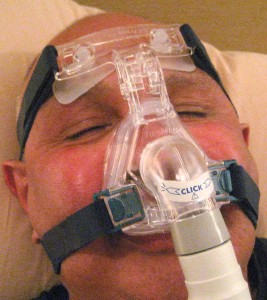Do you have sleep problem that leaves you chronically fatigued, sleepy and irritable?
If yes then you may have disorders like narcolepsy, snoring or sleep apnea.
Narcolepsy is a neurological disorder that affects the control of sleep and wakefulness. People with narcolepsy experience excessive daytime sleepiness and intermittent, uncontrollable episodes of falling asleep during the daytime. These sudden sleep attacks may occur during any type of activity at any time of the day.
Snoring is rough rattling noise made on breathing in during sleep by vibration of the soft palate and the uvula.
Snoring is believed to occur in 30 per cent of women and over 40 per cent of men. It can be potentially serious health hazard. Many people may not think of snoring as a sign of something potentially serious, and not everyone who snores has obstructive sleep apnea.
Sleep apnea is a potentially serious sleep disorder in which breathing repeatedly stops and starts. You may have sleep apnea if you snore loudly, and you feel tired even after a full night’s sleep.
Obstructive sleep apnea is more common form that occurs when throat muscles relax and block your airway during sleep and cause snoring. The other two are central sleep apnea and complex sleep apnea syndrome.
Obstructive sleep apnea can seriously affect your health. High blood pressure, heart attack, heart failure and stroke top the list. It can affect your heart rhythms. It can lower your blood pressure, lower your oxygen level and lead to heart attack and death.
If you are a chronic snorer and your partner observes that you make a snorting, choking or gasping sound then you have a problem.
It is time to discuss your symptoms with your doctor and get a referral to a sleep specialist. You will undergo tests to confirm the diagnosis. The tests involve overnight monitoring of your breathing and other body functions during sleep. The test is called nocturnal polysomnography.
If you have obstructive sleep apnea, your doctor may refer you to an ear, nose and throat specialist to rule out any blockage in your nose or throat. An evaluation by a cardiologist may be necessary.
How to manage obstructive sleep apnea?
Guidelines (2014) from the American College of Physicians (ACP) emphasize lifestyle modifications – especially weight loss. Though the guidelines do not offer any radical treatment updates, they do reinforce the effectiveness of tried and true therapies.
Breathing devices are still best for treating obstructive sleep apnea. Continuous positive airway pressure (CPAP) works well. It is the first line of treatment. It has to be used during sleep. It relieves symptoms but does not cure the problem.
Oral appliances are useful. They are worn only during sleep. Research shows that oral appliance therapy is an effective treatment option. But does not cure the problem.
Surgery is the last option to be used if all else fails. There are many different types of surgery for sleep apnea and snoring. Surgery will not fix everything. You may need to continue using CPAP even when surgery successfully reduces the severity of sleep apnea.
Remember, surgery can have side effects and surgery alone will not fix all your problems. Discuss your options, long-term outcome and side effects of treatment with your specialist before going for surgery.
Start reading the preview of my book A Doctor's Journey for free on Amazon. Available on Kindle for $2.99!



